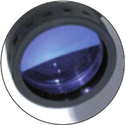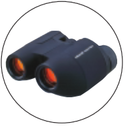How do I choose the "right" binoculars?
Although many binoculars look very similar, they have many different characteristics in terms of use and performance. The information on these pages is intended to help you choose the right binoculars for your purpose, within your budget and according to your personal preferences. Every single pair of Bresser binoculars, even the cheapest, is made of high quality optical glass material, robust housings and precise mechanical components that guarantee years of use. The attention to detail and the long experience in manufacturing optical devices are perhaps even the best guarantee we can give you.
Binoculars come in well over a hundred designs with a wide variety of specifications, but all binoculars have these three components:

 Deutsch
Deutsch
 English
English
 Francais
Francais
 Español
Español
 Italiano
Italiano
 Nederlands
Nederlands
 Polski
Polski







